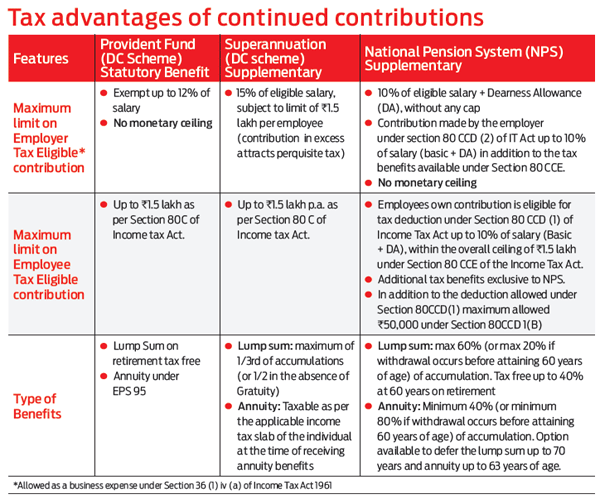PF, NPS and Superannuation
There is plenty to choose from when it comes to retirement savings, which can co-exist

There has been lot of buzz around the recent provisions in the portability of member’s accumulation from PF or Superannuation to the National Pension system (NPS). To sweeten the move, the Finance Ministry in an amendment provides employees exemption from taxation for one time portability from approved PF or Superannuation to their individual NPS account.
The amount transferred will not be treated as an income in the hands of the employee and, it will also not be treated as a contribution in the current year and hence no tax benefit can be availed. Further, as per the PFRDA in its circular which came out on March 6, 2017, it laid down the process for such transfers. Without getting into the benefits of each of the three available retirement options, the pertinent question that arises is around their possible co-existence.
Yes these retirement benefits can co-exist, which would help facilitate employees to preserve more wealth for retirement and ensure a decent income stream. It is not only important but would be paternalistic on the part of employers to educate their employees on the need for building such corpus for postretirement income.
One-time transfer provision
Provident fund is governed by the EPF Act and employees covered under mandatory PF may not be able to transfer it unless the EPF Act is amended to allow such transfers. Even if the employer would like to weigh options of allowing one time transfer of PF or Superannuation, the trustees will have to examine the provisions of the Trust Deed read with provisions of the Income Tax Act, 1961.
The Income Tax provisions for PF and Superannuation are governed by Part A and Part B of the Fourth schedule, respectively. This would mean employer will have to amend the provisions in their Trust Deed and Rules allowing trustees for such transfers into an NPS account. The key takeaway is that now an employee has a choice to move funds weighing his individual circumstances and take advantage of what suits him the best.
Tax benefits
Employers can help employees make their salaries tax efficient. All the three options offer excellent opportunities, as they provide the employees with a choice of contributing to these retirement benefits and there by, helping them save for retirement besides making their income tax efficient. The tax advantages of continued contributions towards PF, Superannuation Plan and the NPS are worth examining.
So, if an employer has an existing Superannuation scheme, it is good to continue with it as both Superannuation and NPS can co-exist offering an opportunity to save higher tax. Under the corporate model of the NPS—employers contribute up to 10% of basic salary out of the purview of taxable income. For those employees who are attracted to perquisite tax, employers may contribute the excess over Rs 1.5 lakh to NPS or still better contribute up to 10% of basic to NPS. This would help preserve more wealth for retirement thereby higher corpus available for purchase of annuity under both Superannuation and NPS will ensure higher stream of post retirement income for employees.

Employees may exercise the option of portability of Superannuation to NPS during the final year of their retirement whereby they have the advantage of 40 per cent of commutation of both the accumulations put together and secure one single annuity pay out, apart from the 100 per cent tax free withdrawal of accrued the Provident Fund.
Anil I Lobo
India Business Leader – Retirement
Practice at Mercer India









